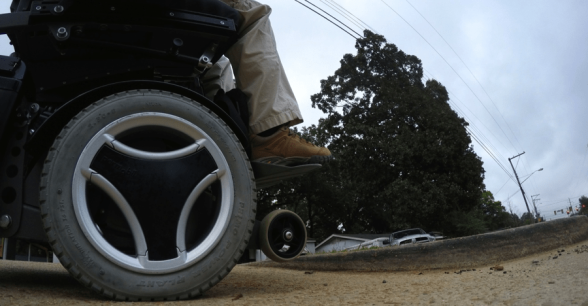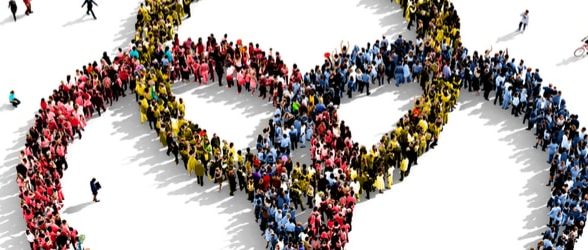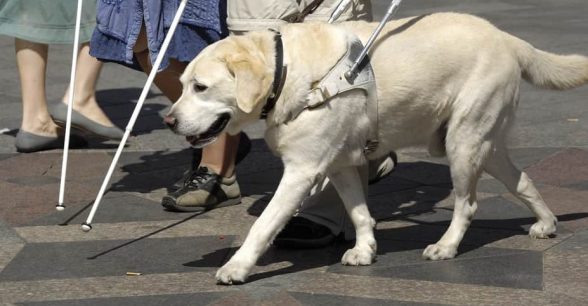Finding Disabled Transgender Pride
Being transgender and disabled are interlinked for me. In both of these identities that I hold, my body does not function or present the way I want it to, or in a way that society would perceive as “normal.” Both are also- in many ways- about perception. As a disabled person with both visible and invisible disabilities, there will always be a disconnect between how people perceive me at first glance and how I perceive myself. The same is true of being a non-binary transgender person. I identify as non-binary: neither a girl nor a boy. However, society is conditioned to view people in a binary system: either boys or girls. Anything outside of that norm is startling and daunting, the same way that disabled people often end up stared at or asked invasive questions by total strangers.
Most of my disabilities are invisible; I do not use any mobility aids that would make my disability readily apparent. The only evidence of my disability is my height, which often means I am mistaken for a child in most public settings. As I’ve gotten older and started working, I’ve encountered plenty of nosy strangers. Once, back in high school, while having a conversation with a co-worker at my local public library, a total stranger walked up to me and started asking me about my height and my medical history. I tried to brush her off with my usual rebuffs of “oh, I was born premature,” but she just kept prodding. My co-worker stood behind me, seemingly frozen, shocked by this encounter, until finally blurting out that we needed to get back to work and that she should really mind her own business. The woman stared, startled, and quickly retreated in a huff.
“I’m so sorry, that was so bizarre. I had no idea what to do,” my co-worker said.
“It’s fine,” I replied. Sometimes I didn’t know what to do either.
Just a couple weeks before, a man had approached me down in the children’s room and asked me if his son could work at the library. I responded that I was just a page and that his son should probably speak to one of the librarians. He continued to ask me questions about my job and how I obtained it. I finally asked him how old his son was, to which he replied, seven. I tried not to laugh.
“In our state, you need to be fourteen to legally work,” I explained.
Instead of simply accepting this answer, the man became visibly angry and insisted that I could not be older than seven. He even dragged a librarian over to point me out and ask why his seven-year-old couldn’t work there. The librarians explained that I was sixteen and steered him away as he still didn’t seem to believe them.
The impulsiveness of strangers to label me as a child often helps prevent awkward gender conversations. I have not started HRT (Hormone Replacement Therapy) yet and still have the (rather large) breasts I was stuck with during puberty. Recently, however, top surgery, a surgical procedure to remove breast tissue, became a possibility for me in the near future. In my excitement, I dove into research on the different types of procedures and groups for people planning on having top surgery to try to gather all the information I could. Finally, I felt excited to begin taking this step that I’ve been wanting and thinking about for years.
These groups are supportive and informative, and I scrolled through post after post, reading about different people’s experiences. Soon, though, I started to feel a disconnect between my experiences and those of many in the group. Much of the conversation around top surgery is about after-care and specifically scar care. Most scar care aims to have the least visible scars possible to obtain a “passing” body. Part of this, for some people, is safety. Many want to walk around shirtless after top surgery and are afraid of being asked invasive questions about their scars and their bodies by strangers. However, as a disabled person with a long medical history, I will never be able to hide my scars. Having “invisible” scars seemed a strange goal to me. I wasn’t sure what I would be trying to hide–there would be so many other scars on my body for people to see. And people will always stare at me in a public space, if not because they are silently trying to determine my gender, then because of the visible parts of my disability. For disabled transgender people, it’s often harder to “pass.” Our bodies are both disabled and transgender: an intertwined cacophony of identities.
For many in the top surgery groups, it was their first time navigating the medical and insurance systems and even their first time having surgery. I felt slightly out of place and longed for a community of other disabled transgender people. I’m sure that they exist and I’m sure that some of them are in these groups and it’s only a matter of finding them. There are specific thoughts I have about my own desire for a flat chest. Will people be more likely to perceive me as a child without a large chest? I wonder if others have similar experiences or how their experiences in recovery and perception of their scars may have differed from their able-bodied peers. Ultimately, the prospect of having surgery excites me, and my chest is something that’s brought me nothing but anxiety, but I do wish I could share these emotions, thoughts, and questions with other transgender disabled people.
My experiences bring to light the similarities and disconnects between the transgender and disabled communities. So much of both identities rely on social constructs that build an inaccessible and binary world. This year, I embrace both my transgender and disabled identities and search for community within this intersection. For pride, I bought a shirt with a rainbow in the background and read, “disability pride.” It’s the perfect symbol of my intertwined queer and disability pride.
About Rooted In Rights
Rooted in Rights exists to amplify the perspectives of the disability community. Blog posts and storyteller videos that we publish and content we re-share on social media do not necessarily reflect the opinions or values of Rooted in Rights nor indicate an endorsement of a program or service by Rooted in Rights. We respect and aim to reflect the diversity of opinions and experiences of the disability community. Rooted in Rights seeks to highlight discussions, not direct them. Learn more about Rooted In Rights




This is a great article. Thank you for writing it. As another trans non-binary disabled person, I find your wish to connect with a disabled trans community very relatable. I know when I started my medical transition, I really wanted to talk to other people with my chronic illness and know how hormones and surgery affected their health. I wanted to know how to deal with staying in the hospital for surgery while autistic and very sensitive to noise and bright lights and having people around me, while having ME and knowing I would likely not be able to get much rest because of the busy environment, and while being socially anxious and possibly not able to advocate for myself. I wanted to know how to deal with the post-surgery ME relapse I’d be having while at the same time recovering from surgery. Like you, I didn’t find making my top surgery scars less visible a priority. In fact, with my executive dysfunction issues, regular scar care was really difficult and I barely managed to do it at all. I’m actually loving my visible scars, though. They signify to me that I’ve been able to make a positive choice about my body, and since I’m quite ill I don’t often feel like I have much of a say in what my body’s like. They make me feel more connected to my body.
And like you, I get invasive questions about my disabilites, which is so similar to the invasive questions I get about being trans. They both come from people feeling like they’re owed information about my body.
Your new shirt sounds lovely. Best of luck when you have your top surgery in the future! =)
❤️